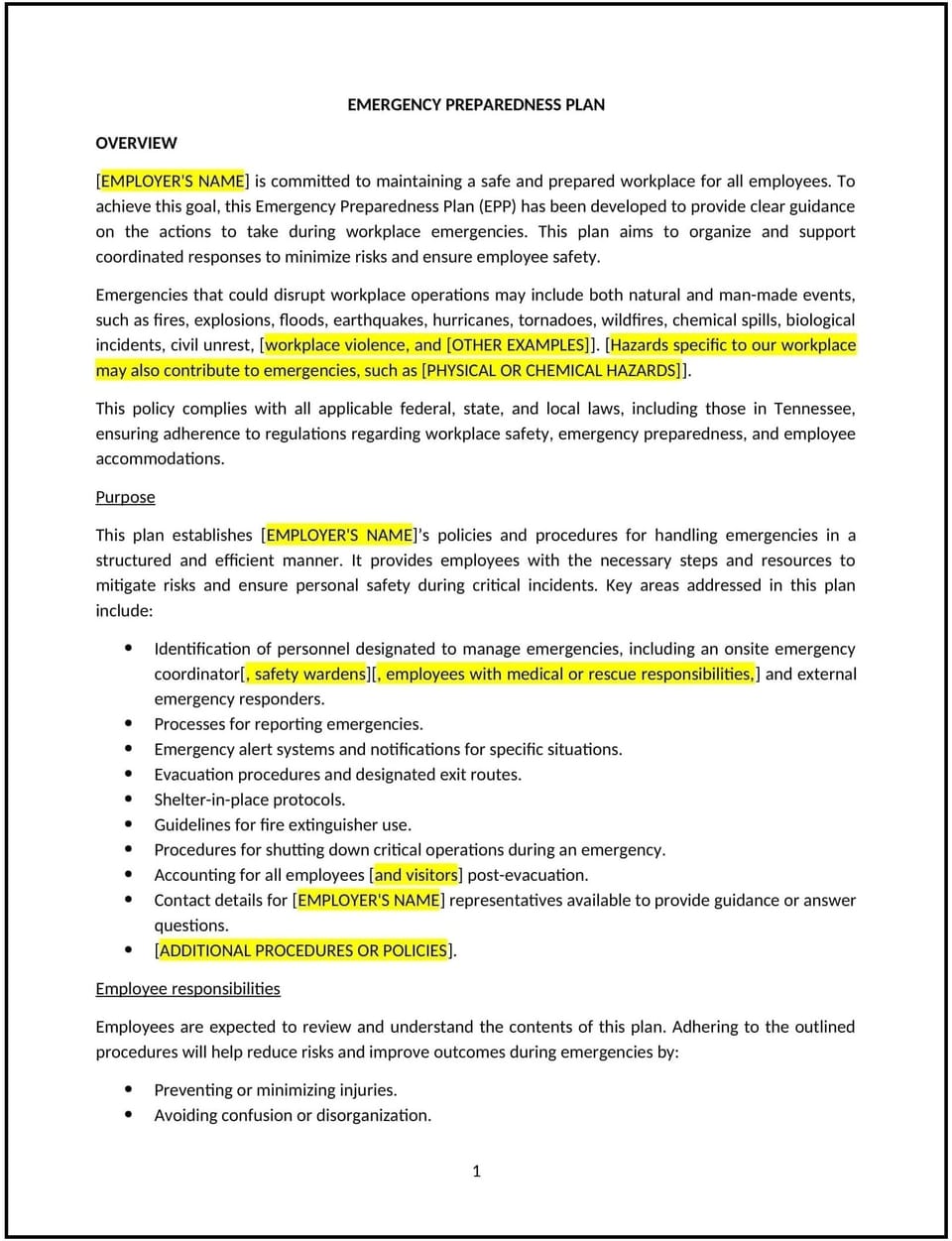Emergency preparedness plan (Tennessee): Free template

Emergency preparedness plan (Tennessee)
This emergency preparedness plan is designed to help Tennessee businesses establish guidelines for responding to emergencies, such as natural disasters, fires, or medical incidents. It outlines procedures for ensuring employee safety, minimizing disruptions, and recovering operations.
By adopting this plan, businesses can protect employees, reduce risks, and maintain business continuity during emergencies.
How to use this emergency preparedness plan (Tennessee)
- Define emergency types: Specify the types of emergencies covered, such as tornadoes, floods, or workplace accidents.
- Set response procedures: Outline steps for evacuating, sheltering, or securing the workplace during an emergency.
- Assign roles: Identify employees responsible for emergency response, such as evacuation coordinators or first aid responders.
- Train employees: Educate staff on emergency procedures and their roles during an incident.
- Review and update: Assess the plan annually to ensure it aligns with evolving business needs and emergency risks.
Benefits of using this emergency preparedness plan (Tennessee)
This plan offers several advantages for Tennessee businesses:
- Protects employees: Ensures employees know how to respond safely during emergencies.
- Minimizes disruptions: Reduces downtime and helps businesses recover operations quickly.
- Enhances safety: Provides clear guidelines for handling emergencies effectively.
- Reduces risks: Prepares businesses to respond to unexpected incidents.
- Aligns with best practices: Supports a structured approach to emergency preparedness.
Tips for using this emergency preparedness plan (Tennessee)
- Communicate the plan: Share the plan with employees and include it in the employee handbook.
- Provide training: Educate staff on emergency procedures and their roles during an incident.
- Conduct drills: Regularly practice emergency scenarios to ensure readiness.
- Address issues promptly: Update the plan if gaps or weaknesses are identified during drills or actual emergencies.
- Update regularly: Assess the plan annually to ensure it aligns with evolving business needs and emergency risks.
Q: How does this plan benefit businesses?
A: It protects employees, minimizes disruptions, and enhances safety during emergencies.
Q: What types of emergencies should businesses prepare for?
A: Natural disasters, fires, medical incidents, and workplace accidents are common emergencies to plan for.
Q: How often should businesses conduct emergency drills?
A: At least annually, or more frequently if required by industry standards or local regulations.
Q: What should businesses do if the plan fails during an emergency?
A: Review and update the plan to address gaps and improve future responses.
Q: How often should businesses review this plan?
A: Businesses should review the plan annually or as needed to address changing risks and business needs.
This article contains general legal information and does not contain legal advice. Cobrief is not a law firm or a substitute for an attorney or law firm. The law is complex and changes often. For legal advice, please ask a lawyer.


